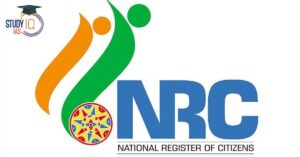Table of Contents
Rayalaseema
Context: Andhra Pradesh faces a severe heatwave and water scarcity, particularly in Rayalaseema.
About Rayalaseema
- Location: Southern part of Andhra Pradesh. Comprises the southern districts of Anantapur, Chittoor, Kadapa, and Kurnool

- Geography:
- It is made up of Archean Gneiss with an average elevation of 500-600 m.
- Semi-arid climate: hot summers, and cooler winters compared to the coast.
- Rayalaseema gets insufficient rain because it is surrounded by hills in the east and Karnataka plateau in the southwest, making it more susceptible to drought conditions.
- Penna is a major river in the region.
- The basin of Rayalaseema was laid with limestone, slates and shales.
- Economy:
- Agriculture: Rayalaseema is primarily dependent on agriculture. Despite the arid climate, the region is known for its horticulture, with the cultivation of crops such as mangoes, bananas, papayas, and groundnuts.
- Mining: It is also a significant industry in Rayalaseema, with deposits of limestone, dolomite, and granite.
Solar PV Cells
Context: The Ministry of New and Renewable Energy (MNRE) re-implemented the Approved List of Models and Manufacturers (ALMM) of Solar Photovoltaic (PV) Modules.
What is the ALMM List?
- This list specifies manufacturers whose products are eligible for use in government projects and schemes, aiming to promote local sourcing and boost India’s renewable manufacturing ecosystem.
- It was introduced in 2021 but put on hold due to concerns from renewable power producers who relied on cheaper Chinese imports.
Rationale for Re-implementation
- The government believes India’s domestic solar sector is now competitive due to schemes like the Production Linked Incentive (PLI).
- This is an import substitution effort, not a complete import ban.
India’s Reliance on Solar Imports
- India heavily relies on imports, particularly from China, for solar cells and modules.
- In the past five years, India imported $11.17 billion worth of solar equipment.
- China accounts for over 80% of global manufacturing capacity across the solar PV supply chain.
India’s Policy Response
- The government has taken several steps to reduce import dependence:
- ALMM list re-implementation.
- ₹19,500 crore PLI scheme to boost domestic manufacturing across the solar supply chain.
- Additionally, India implemented a 40% customs duty on PV modules and 25% on PV cells, which was later halved due to the impact on solar capacity additions and project costs.
Reasons for China’s Dominance in Solar Manufacturing
- China’s cost advantage comes from factors like:
- Lower electricity prices for manufacturers.
- Government prioritisation of solar PV as a strategic sector.
- Large domestic demand enabling economies of scale and innovation.
India’s Solar Power Ambitions
- India aims for 500 GW of non-fossil fuel installed capacity by 2030.
- The country has the world’s fastest-growing electricity demand due to economic growth and extreme weather.
- Solar power is a crucial component of India’s clean energy goals, with untapped potential of 748.99 GW.
Central Board of Direct Taxes (CBDT)
Context: The Election Commission has directed the CBDT to verify any mismatch in the information provided in the affidavit filed by Union Minister and BJP candidate Rajeev Chandrasekhar as he contests from Thiruvananthapuram.
About Central Board of Direct Taxes (CBDT)
- What it is: A statutory body under the Ministry of Finance, established by the Central Board of Revenue Act, 1963.
- What it does:
- Formulates policies for direct taxes (income tax, etc.)
- Oversees the Income Tax Department’s functioning
- Deals with levying and collecting direct taxes
- Proposes changes to direct tax laws and tax rates
- History:
- Evolved from the Central Board of Revenue (1924), which handled both direct and indirect taxes.
- Split from the Central Board of Excise and Customs in 1964 due to increased workload.
- Structure:
- Led by a Chairman and six members.
- Members hold the rank of ex-officio Special Secretary to the Government of India.
- Roles include Member (Income Tax), Member (Legislation and Computerization), Member (Revenue), Member (Personnel & Vigilance), Member (Investigation), Member (Audit & Judicial).
- Chairman coordinates, with each member handling specialised functions.
- Selection of Chairman and Members from the Indian Revenue Service (IRS).
- Powers:
- Administrative Control: Oversees the Income Tax Department’s national operations.
- Rule-Making Authority: Crafts rules and issues guidelines for enforcing direct tax laws.
- Exemptions and Approvals: Can grant tax exemptions, relaxations, and approvals under specific conditions.
- Tax Audits: Authorised to conduct audits to ensure tax compliance and accuracy.
- Penalty Imposition: Imposes penalties for tax law violations, including non-filing and underreporting.
- Surveys and Searches: Can conduct surveys and searches to detect tax evasion and seize assets.
- Information Requisition: Has the authority to request information for tax assessments and investigations.
- Appellate Decisions: Holds appellate powers for hearing and deciding on tax dispute appeals.
- International Agreements: Capable of entering agreements like DTAA to prevent double taxation and enable information exchange.
Examples, Data and Case Studies For Value Addition
- Health (GS 2): The World Health Organization released the Global Hepatitis Report in 2022.
- India ranks second globally in terms of the prevalence of viral hepatitis.
- The country accounts for 11% of the total global hepatitis burden.
- Bridging the Digital divide, Employment (GS 2, GS 3): Karya is an Indian start-up that aims to create impactful solutions for economically disadvantaged communities.
- Karya connects rural Indians to versatile and accessible digital employment.
- Workers use their smartphones to record themselves speaking in their native languages. These recordings are used to create ethical data sets that Karya sells to clients working on AI models.


 Operation Baam: Baloch Separatist Group ...
Operation Baam: Baloch Separatist Group ...
 National Register of Indian Citizens (NR...
National Register of Indian Citizens (NR...
 World Population Day 2025, Themes, Histo...
World Population Day 2025, Themes, Histo...





















